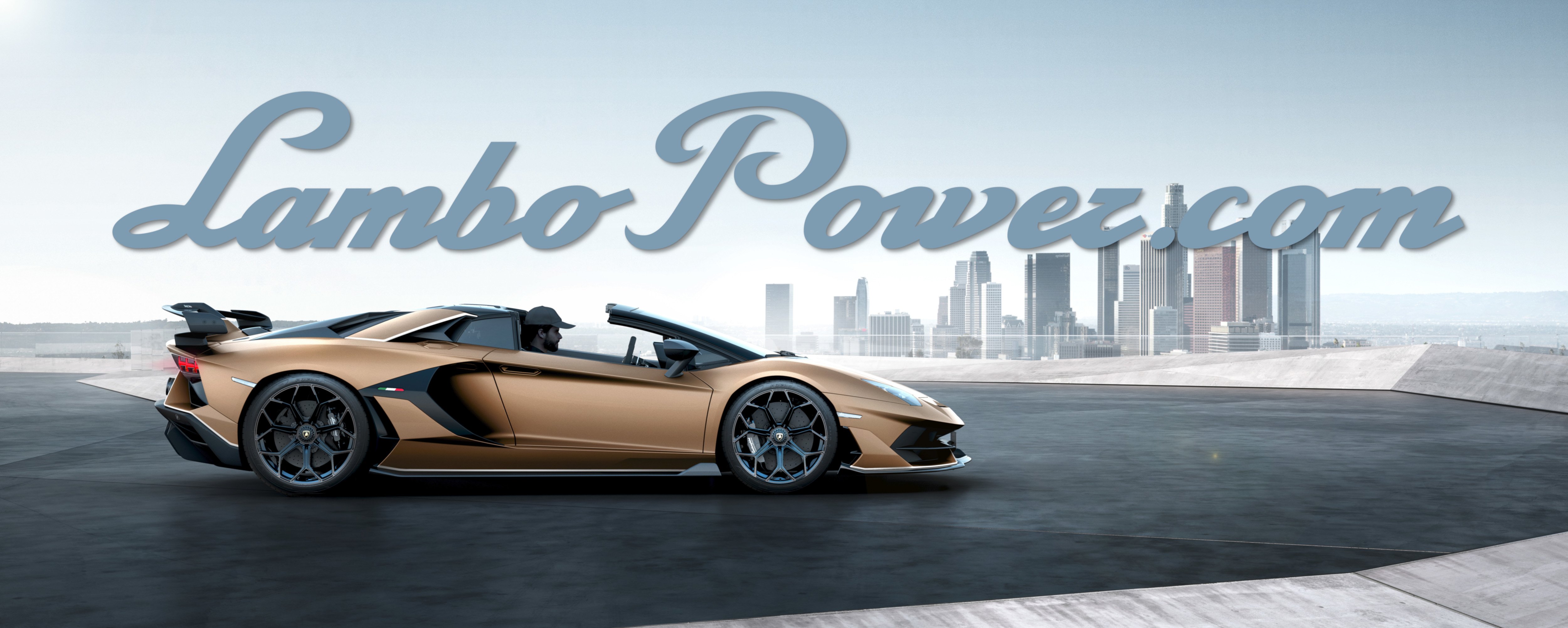-
Posts
13,811 -
Joined
-
Last visited
-
It's not even the disruptive part, it's the smoke and mirrors of it all. Nothing is real. I miss sitting with the vintage owners drinking wine and swapping stories on the porches at night in Monterey. That's the good stuff now. Find that again, and we'll be ok.
-
You're 100% correct. The "specialness" of a new Lamborghini has been diluted. Look at Porsche. Making buckets of cash from the SUV, but now everyone has one or sees one it's just like any other car. The way that old feeling is by buying a classic, or a special icon of the brand. And those guys are a lot less braggadocios than the Tik Tok/YouTube Influencers. The thing now is to actually buy it/own it and enjoy it without plastering it all over social media.
-
Original owners still retain it. It's more of a museum now. Lot's of great content, but activity has now moved onto Facebook groups, WhatsApp chat and Instagram. If there was a way to bring it back, we would. I miss it, but the times they are a changing.
-
Yeah, lots of great memories here.
-
Unfortunately we add another to the roster. Kinsella has passed away in the past 24 hours. May he rest in peace.
-
Bravo! Good to hear.
-
I can't stand her videos....
-
How cool! How were the exhibits? Their upcoming Golden Age of Rally looks awesome!
-
Introducing the innovative ‘monofuselage’, a new aeronautics-inspired monocoque concept made entirely of carbon fiber The first super sports car with front structure in 100% Forged Composites Increased strength and torsional stiffness with significant weight reduction Sant'Agata Bolognese, 14 March 2023 – For 60 years, Automobili Lamborghini has been synonymous with cutting-edge innovation. Just a few weeks ahead of launching the first hybrid plug-in V12 High Performance Electrified Vehicle (HPEV), the Sant’Agata Bolognese brand unveils a technical solution that is unique in today’s automotive landscape. The LB744 is based on a new aeronautics-inspired chassis, the ‘monofuselage’. As well as a monocoque made entirely of multi-technology carbon fiber, it features a front structure in Forged Composites; a special material made of short carbon fibers soaked in resin. This technology was patented and used by Lamborghini in its first structural applications as far back as 2008. The monofuselage represents a significant step forward from the Aventador in terms of torsional stiffness, lightweight qualities and driving dynamics. What’s more, the LB744 is the first super sports car to be fitted with a 100% carbon fiber front structure: carbon fiber is also used for the front cone structures to ensure a level of energy absorption that is significantly higher when compared to a traditional metal structure – double that of the Aventador Ultimae[1]’s aluminium front frame - combined with a substantial reduction in weight. In fact, the LB744 monofuselage is 10% lighter than the Aventador chassis, and the front frame is 20% lighter than its aluminum predecessor. The torsional stiffness has also been improved with a value of 40,000 Nm/°, up +25% compared to the Aventador and guaranteeing best-in-class dynamic capabilities. The design concept underlying the development of the new monofuselage is based on the maximum integration between components. This is optimized thanks to the introduction of extensive Forged Composites technology, as well as the development of the monolithic rocker ring. This use of carbon fiber makes the LB744 unique in the super sports car arena: the single- element ring-shaped component is made of CFRP (Carbon Fiber Reinforced Plastic) and forms the supporting structure of the car. The rocker ring encloses and connects the Forged Composites elements such as the tub, the front firewall and A pillar. The production of Forged Composites components also optimizes efficiency and increases sustainability during the manufacturing process by reducing the energy consumption of cooling equipment and quantity of waste materials. The more traditional, but no less efficient, technology of autoclave composite production with pre-impregnated material was retained for the roof construction. The autoclaved carbon fiber meets high technical, aesthetic and quality requirements, complemented by craftsmanship in the highly specialized hand lay-up process, which results from years of quality-driven in-house production of composite material components. It is a manufacturing decision that also gives the customer maximum versatility in roof customization. The rear chassis is made of high-strength aluminum alloys and features two important hollow castings in the rear dome area: these integrate the rear suspension’s shock towers and powertrain suspension into a single component with closed inertia profile, guaranteeing a significant reduction in weight, an increase in rigidity and a substantial reduction in welding lines. The LB744 represents a new “year zero” in relation to the use of carbon fiber in car production, summed up in the acronym AIM (Automation, Integration, Modularity). ‘Automation’ refers to the introduction of automated and digitalized processes into material transformation, while preserving traditional Lamborghini manufacturing, such as in the discipline of composites. ‘Integration’ relates to the integration of several functions into a single component through the development of compression molding. This process uses preheated polymers to enable the production of components with a wide range of lengths, thicknesses and complexity, ensuring optimum integration between components to guarantee high torsional stiffness. Finally, ‘Modularity’ refers to making the applied technologies modular and therefore more flexible and efficient to respond to all the product requirements and characteristics. [1] Fuel consumption and emission values of Aventador LP 780-4 Ultimae - Fuel consumption combined: 18.0 l/100 km; CO2-emissions combined: 442 g/km (WLTP)
-
I see some Sesto Elemento in the front end on this one. Never caught it till now.
-

The new V12 Lamborghini hybrid (Aventador successor)
Destructo replied to Luckydaff's topic in Automobili Lamborghini
You are spot on. It's polishing up established tech and putting the badge on it. I hate that. And as for styling, it's the epitome of German imagination. It's angular, cold and efficient. No flare, no panache. Site wise, I'm going through and cleaning up in anticipation of an update. I wanted to reduce the visual footprint of the board because it was a monster. All the data and threads are there, but it was unnecessarily complex and redundant. I want to bring the board back to the basics. Slow progress, but progress none the less. -

The new V12 Lamborghini hybrid (Aventador successor)
Destructo replied to Luckydaff's topic in Automobili Lamborghini
That’s pretty cool, sadly it’s just affirming my dreams are dying one internal combustion engine at a time. Oye… -

Record Breaking Lamborghini Celebration in Japan!
Destructo posted a topic in Automobili Lamborghini
Article Link Two major events in Japan celebrated Automobili Lamborghini’s 60th anniversary starting at the Suzuka Circuit. More than 250 cars, including both current and historic models, paraded on the track, and the Guinness World Records certified the event as the largest gathering of Lamborghini cars in history (251 vehicles), beating the previous record. The event also included an exhibition of Lamborghinis from the past such as the 350 GT, the Islero and the Countach, all restored by Polo Storico. An exclusive Ad Personam area was created replicating the permanent facilities of the Lamborghini Lounge Tokyo. Here, Lamborghini owners had a chance to choose from an infinite combination of colors, materials, extra features, and special finishes for exterior and interior customizations of their Lamborghinis. Where there is Lamborghini, there is art. Two works of art were on display during the event, “Time Gazer” and “Huracán STO Time Chaser_111100”, resulting from a collaboration between Japan’s most innovative contemporary artist, Ikeuchi, and Automobili Lamborghini. The Suzuka track also provided the stage for the Japanese market debut of the Huracán Sterrato, originally unveiled at Art Basel Miami Beach in November 2022. A showcase of excellence for the excellence of Lamborghini. The celebrations continue in Japan, where the Lamborghini GIRO Japan 2023, a breathtaking driving tour in which 50 cars visited the historic areas of Kyoto and Nara from February 23-25. Driving through Japan’s most famous tourist spots while experiencing the incomparable feeling of being behind the wheel of a Lamborghini is truly an unforgettable experience for drivers who have the chance to appreciate Lamborghini’s allure. In addition, the Kyoto International Conference Center hosted the gala dinner to celebrate the 60th anniversary. During the event, the artwork entitled “Lamborghini Huracán STO Time Chaser_111100” was displayed. The GIRO traveled through many stages before culminating in a concluding celebration that hosted drivers, owners and fans. Throughout 2023, this important anniversary is being celebrated that allows us to look not only to the past, but also and especially to the future, where Lamborghini's roots are and always will be based. Avant-garde on the road.


